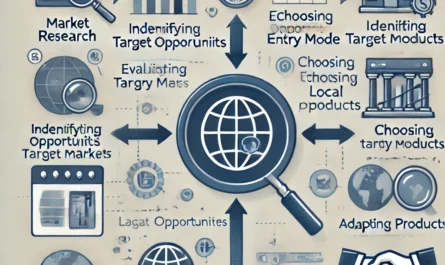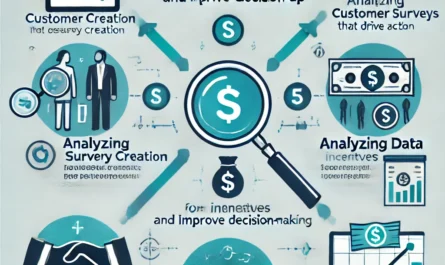Understanding your customers is at the core of business success in today’s competitive landscape. Customer insights offer a wealth of information that can dramatically shape your business strategy, from marketing and product development to customer experience and beyond. Businesses that leverage data-driven strategies based on customer insights are better equipped to meet market demands, anticipate trends, and create personalized experiences that foster loyalty and drive growth.
What Are Customer Insights?
Customer insights are the data and interpretations businesses gather about their customers, providing a deep understanding of who they are, what they want, and why they make certain purchasing decisions. These insights go beyond just knowing basic demographics; they delve into behaviors, preferences, and motivations. When harnessed effectively, customer insights can unlock powerful strategic opportunities, helping businesses make informed decisions that align with their target audience’s needs.
Types of Customer Insights
Customer insights come in various forms, each providing unique value to business strategies.
- Behavioral Insights: This data focuses on how customers interact with your business, products, or services. It includes purchase histories, online behavior, and engagement metrics.
- Demographic Insights: These are the basic characteristics of your customer base, such as age, gender, income, education, and location.
- Psychographic Insights: This type of data examines customers’ values, attitudes, interests, and lifestyles, helping you understand why they choose your brand over competitors.
- Feedback and Sentiment: This includes direct feedback from customers, whether through reviews, surveys, or customer service interactions, providing insights into their experiences with your business.
By integrating all these types of insights, you can create a comprehensive picture of your customers and craft a strategy that resonates deeply with their preferences and needs.
Why Customer Insights Matter
Customer insights provide actionable data that help businesses refine their operations and strategies. They guide product development, shape marketing campaigns, and improve customer experiences, making businesses more agile in responding to consumer demands.
A key reason customer insights are essential is that they help businesses move from reactive to proactive approaches. Instead of guessing what customers might want, businesses can use data to predict needs and tailor offerings accordingly. This not only enhances customer satisfaction but also increases loyalty, resulting in long-term business growth.
How to Collect Customer Insights
Collecting customer insights is easier today than ever before, thanks to technology. Here are some of the most effective methods:
- Surveys: One of the most direct ways to gather insights is through customer surveys. By asking the right questions, businesses can capture data on preferences, pain points, and satisfaction levels.
- Social Media: Platforms like Facebook, Instagram, and Twitter are rich with customer insights. Social listening tools can help businesses monitor conversations about their brand, competitors, and industry trends.
- Analytics Tools: Website and app analytics provide a wealth of behavioral data. Google Analytics, for example, shows where customers are coming from, what they’re looking for, and how they navigate through your site.
- Customer Relationship Management (CRM) Systems: CRM tools store detailed customer information, from contact details to purchase history, providing businesses with a 360-degree view of their clientele.
By using a combination of these tools, businesses can collect robust insights to form a data-driven foundation for decision-making.
Using Surveys for Customer Insights
Surveys are an excellent method for collecting direct feedback from customers. To get the most value out of them, it’s important to ask open-ended questions that allow customers to express their opinions freely. Questions like “What is the biggest challenge you face when using our product?” or “How can we improve your experience?” can reveal valuable insights that drive strategic improvements.
Businesses should also ensure their surveys are well-timed and targeted. Sending surveys right after a purchase or interaction with customer support ensures that the feedback is fresh and relevant.
The Power of Social Media
Social media provides businesses with a wealth of real-time data about their customers. By monitoring mentions, comments, and reviews, businesses can gauge customer sentiment and spot emerging trends. Social listening tools, like Hootsuite and Sprout Social, help automate this process, allowing businesses to track keywords related to their brand or products across various platforms.
Engaging directly with customers on social media can also provide valuable qualitative insights. When businesses respond to comments or questions, they build rapport and gain a better understanding of their audience’s needs.
Customer Relationship Management (CRM)
CRM systems are vital tools for businesses looking to collect and analyze customer data. They help centralize customer information, making it easier to track interactions, segment audiences, and identify patterns in behavior. Tools like Salesforce, HubSpot, and Zoho CRM offer robust features that allow businesses to not only manage relationships but also derive actionable insights from their customer data.
With a CRM, businesses can track the customer journey from initial contact through to post-purchase, gaining a clearer picture of how different touchpoints influence decision-making.
Analyzing Customer Behavior
Customer behavior analysis involves reviewing data to identify patterns and trends that can inform business decisions. For instance, analyzing shopping cart abandonment rates can help e-commerce businesses understand why customers leave without purchasing. Similarly, tracking the pages customers visit on your website can highlight which content resonates most with them.
Behavioral data is a powerful tool in refining marketing and sales strategies. By knowing what drives your customers’ actions, you can create more effective campaigns that align with their decision-making process.
You can also read; How to Create a Sustainable Business Growth Strategy
Demographics and Their Impact
Demographics provide key insights into the makeup of your customer base. Understanding who your customers are allows you to create more personalized marketing messages. For instance, a company targeting millennials might focus on digital marketing channels like Instagram or TikTok, whereas a business targeting older generations may prioritize email or traditional media.
By segmenting your audience based on demographic factors like age, gender, or location, you can tailor your approach and allocate resources more efficiently.



